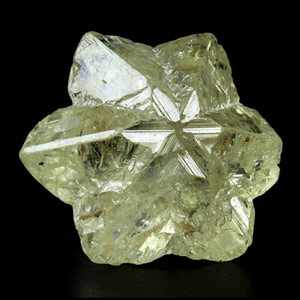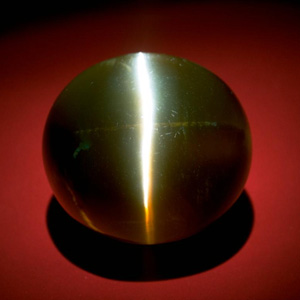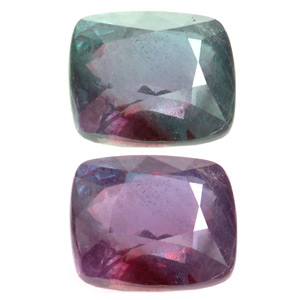chrysoberyl
Chrysoberyl, a captivating gemstone with a name rooted in Greek, combines "chrysos" meaning golden and "beryllos" signifying a type of precious stone. This aptly named gemstone is renowned for its lustrous brilliance and remarkable durability.
Chemically composed of beryllium aluminium oxide, chrysoberyl is distinct from other beryl gemstones like emerald and aquamarine. Its striking green or yellow hues, characterized by exceptional clarity, have made it a cherished choice in jewellery for centuries.
Chrysoberyl's geological origins can be traced to metamorphic rocks and alluvial deposits, with notable sources including Brazil, Sri Lanka, and Madagascar. Its resilience, often compared to sapphire, has earned it a reputation as one of the world's hardest gemstones.
One of the most fascinating features of chrysoberyl is its unique optical phenomenon known as cat's-eye or chatoyancy, where a luminous band appears to glide across the surface when the gemstone is cut en cabochon. This captivating effect adds to the gem's allure and continues to captivate gemstone enthusiasts and collectors alike.
Click on the terms in the table below to discover their meaning



Click on the terms in the table below to discover their meaning
| Name | Chrysoberyl |
|---|---|
| Category |
Oxide mineral |
| Chemical Formula | BeAl2O4 |
| IMA Symbol | Cbrl |
| Crystal System | Orthorhombic |
| Crystal Habit | Tabular or short prismatic; prominently striated |
| Twinning | Common, producing either flattened heart-shaped or pseudohexagonal multiple contact and penetration twins |
| Cleavage | Good / Distinct |
| Fracture | Conchoidal to uneven |
| Tenacity | Brittle |
| Hardness (Moh's Scale) |
8.5 |
| Specific Gravity | 3.69 - 3.75 |
| Diaphaneity | Transparent to translucent, may be opaque and display chatoyancy with oriented inclusions |
| Colour | Green, yellow, brown, greenish black, may be raspberry-red under incandescent light when it contains chromium; colourless, pale shades of yellow, green, or red in transmitted light |
| Streak | White |
| Lustre | Vitreous |
| Optical Class | Biaxial (+) |
| Refractive index | nα = 1.745 |
| nβ = 1.748 | |
| nγ = 1.754 | |
| Birefringence | δ = 0.010 |
| Dispersion | Rd = 0.014 |
| Pleochroism | Very weak |
| Clarity | Type I |
| Notable Varieties | Yellow Chrysoberyl, Green Chrysoberyl, Alexandrite, Cat's Eye Chrysoberyl |
References
Mineralogical Society of America. (2005). Chrysoberyl. In J. W. Anthony, R. A. Bideaux, K. W. Bladh, & M. C. Nichols (Eds.), Handbook of Mineralogy. Chantilly, VA 20151-1110, USA: Mineralogical Society of America. Retrieved from https://
The Gemology Project. (2012, August 13). Chrysoberyl. Retrieved from The Gemology Project: http://